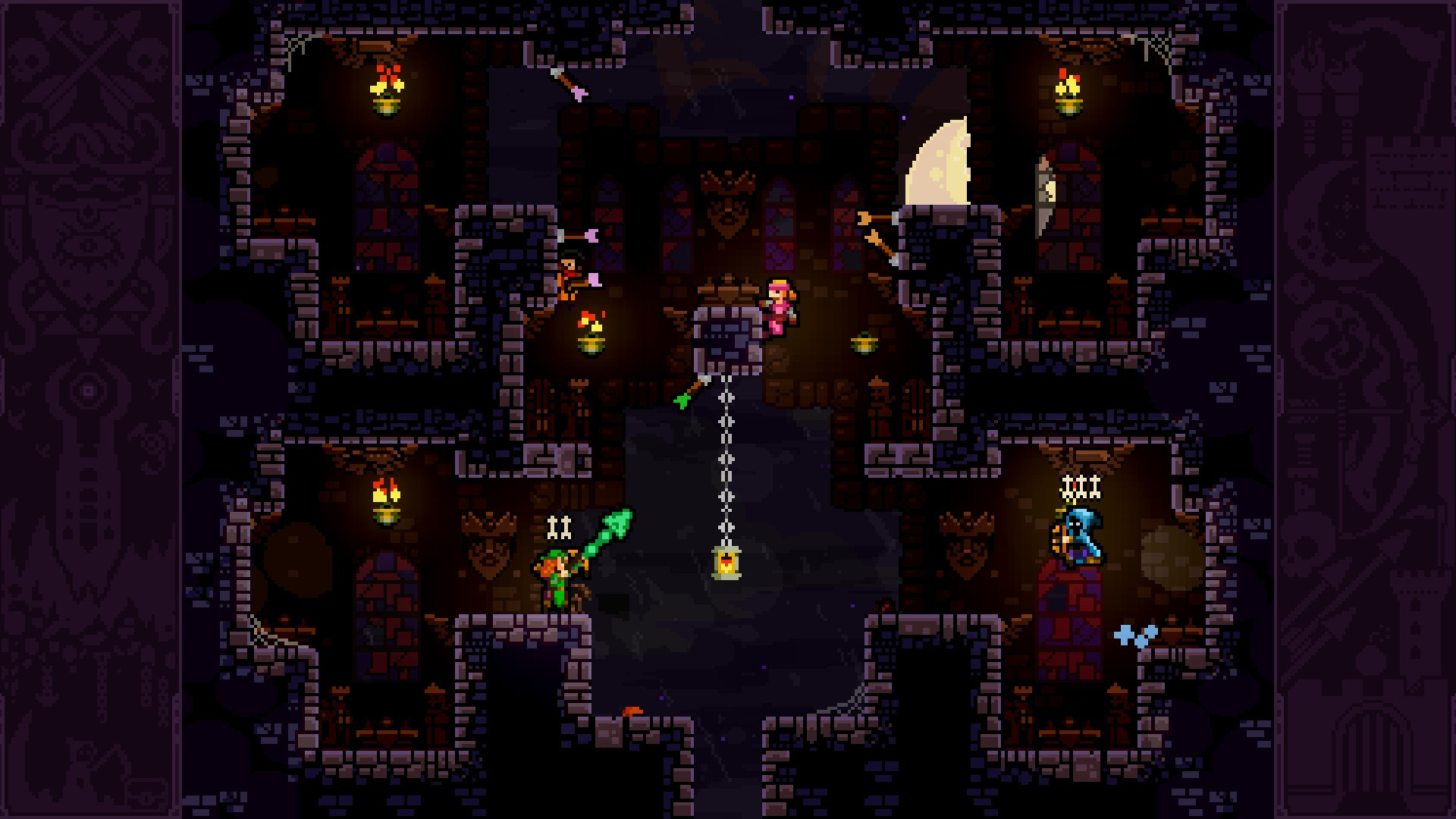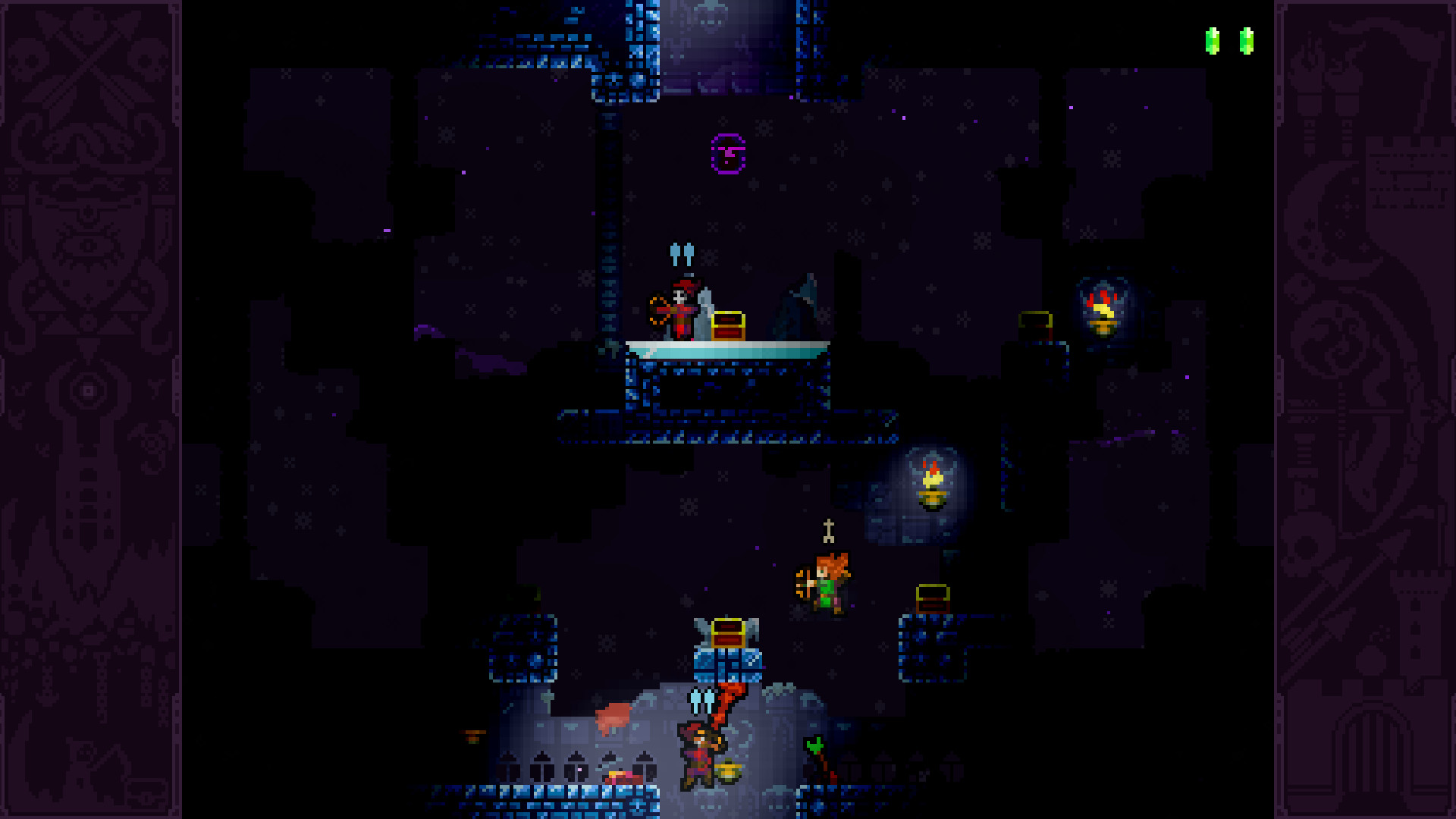I like Skin Deep. I like it more than Quadrilateral Cowboy, the previous title by BLENDO Games. I wouldn’t have mainlined thirteen hours of it over two days the day it released if I didn’t like it. If you like weird indie stuff, and find yourself interested by an immersive sim where you save cats from space pirates, give it a look.
I’m front loading this so that when I spend several paragraphs complaining about the game in just a bit, no one gets the wrong idea here. I’ll say it again: I like Skin Deep. I recommend Skin Deep.
Give me more of this sort of thing please.
I just also happen to have some problems with the game.
Skin Deep is an immersive sim stealth sort of game. You are Nina, an insurance agent. The deal is simple: you get cryogenically frozen on long haul space trips. If the ship gets attacked by space pirates, you get unfrozen, at which point your job is to rescue the crew.
The defrosting is how each of the game’s 13 levels (each their own individual spaceship) starts, with you transforming from popsicle to human and stepping out of your pod. From there, it’s pretty much up to you how you want to approach things. The only thing you have to do is save all the captured crew mates by unlocking them from their little cages with purple key cards.

Since this an immersive sim, it would be a bit tricky to cover every interaction available, so I’m going to quickly go over a few key ones.
Every level takes place on a space ship, with both an interior and exterior. The exterior is accessed a variety of ways, and as Nina has a third lung, moving around in a zero-g and zero-oxygen environments poses no problems for her.
Every ship also has a set of four systems available. These are: vents, windows, airlocks, and trash chutes. They function as a traversal tools with added benefits. Vents let you sneak around and hide, windows can be broken to suck enemies into outer space, airlocks let you leave the ship the normal way, and trash chutes let you leave non-normally, at the cost of becoming smelly.
These systems often start off locked. You can unlock them by finding and interacting with their respective fuseboxes to turn them back on. Later on, the systems become locked down even further by enemies.

Speaking of which: let’s talk about enemies. There are five types of enemies: 3 types of space pirate, a turret, and a floating knife fish robot. The space pirates make up the bulk of the challenge, with the turret and swordfish being mostly incidental.
The catch is that the space pirates are all wearing Skull Savers(TM) which, upon death, will transport their head to a revival platform, and regenerate their body. Unless—of course—you grab their head before that happens, and stuff it into your inventory.

Which is as good a time as any to talk about Nina a bit more. You have five inventory slots, so every head you’re carrying takes the space of one useful item. So the best way to deal with pirates in the long term is to chuck their heads into the sweet void of space.
Given that we’re five paragraphs in, hopefully I’ve explained enough that the next set of complaints is going to make sense.
Complaints
The very first level of Skin Deep opens with mini-tutorial that shows you the following message.

And it’s not wrong, but I want to contest it a little bit. It’s true that damaged enemies will find their way to health stations, and request repairs for broken control panels… but that’s all I ever saw them do. As far as immersive sims go, the game felt somewhat underwhelming. Enemies react to sound and smell, but won’t notice missing items, or change up their patrol patterns even after you’ve freed prisoners they’re supposed to be protecting.
This isn’t intrinsically bad, but it does prevent the game from ever feeling particularly alive, if that makes sense. It also leads to my bigger problem.
Different Day, Same Ship
By the end of Skin Deep, I found myself frustrated because I was using the same general strategy on every single ship. It went something like this: sneak around unlocking all the doors. Next up, find and unlock all the subsystems. After that, take over control of the ship cameras. Only then would I finally switch over to taking out enemies, or experimenting with whatever that ship’s gimmick was.
And the result was that every level felt samey. Not because they are! But even when each level had its own special gimmick, I tended to never use the gimmick until after I had already dealt with everything else. This leads to my big complaint.
For an immersive sim, I never felt incentivized to change up my primary plan, and adjust for the situation I was in, or to try to improvise. I did the same thing over and over again, because when I died (and I died a lot!) I would lose 10 minutes of progress, and have to start again. And it is very easy to die when enough things start to go wrong.
The last level is probably the peak example of this. Without spoilers, its “gimmick” is that it’s a lot larger than any other ship in the game. It also removes a few of the fallbacks or safeties that are available in other levels. The end result is that it’s much more punishing if you fail.
I don’t know if it’s a Blendo “thing” to make their final levels skill testing like this. I remember Quadrilateral Cowboy doing something similar, but in that game, it was only the final level where you finally got access to all the toys at once.
But Skin Deep didn’t give me more tools or toys to work with. Instead it was just more of a slog.
Bonus Round
So now let’s go over a few other things that didn’t quite fit anywhere else. First up, the writing is quite good, and narrative is quite weird. There’s one very clever soft touch done for building character relationships that I quite enjoyed. The setting is interesting, but mostly serves as a backdrop for the gameplay and the rest of the story about a specific set of characters.
Also, there are bonus objectives for each level. I have to wonder if having them show up at the start, instead of after you’ve completed the level, would have made me want to try to use the level gimmicks more?
The controls are also a bit wonky at times, and I threw multiple guns when I meant to be firing them. As a general note: yes, this is less effective than shooting with them.
Overall
I enjoyed Skin Deep, but I wish I enjoyed it more. I still like it enough to recommend. It was $20, and I mainlined the whole thing over two days.
But I wish I felt like it delivered on the promise of the immersive sim more than it actually did. Or at least forced me out of my comfort zone with the strategies and planning, instead of letting there be an “ideal” strategy to beat most levels.
Still, if you want something interesting and weird, give it a shot. You might even enjoy it more than me.
Here’s a link to the Steam Page.











